The NVIDIA SHIELD Tablet Review
by Joshua Ho on July 29, 2014 9:00 AM EST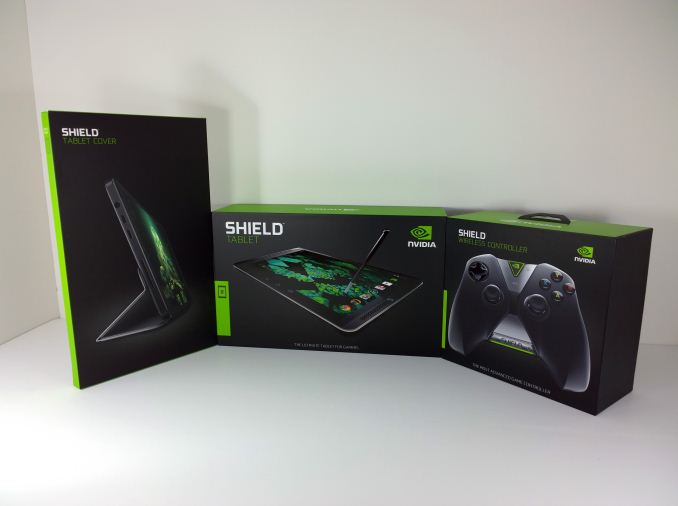
As I discussed in our launch article last week, the Shield tablet is very much the culmination of lessons learned from 2013. While the Tegra Note 7 was a decent tablet, it had to eke out a profit through hardware sales against competition that was willing to sell their tablets with no profit on hardware. Meanwhile the Shield portable was a good portable gaming device, but it was far too specialized to be anything but a gaming device. Without an established gaming ecosystem, NVIDIA struggled against established competitors.
As a result of these influences, today NVIDIA is becoming the first OEM to launch a serious gaming tablet running Android. While gaming tablets have been done before, they’ve been few and far between. Now it has always been technically possible to take a high end tablet and make it usable for gaming, but for the most part these attempts are marred by either the need for root or an application that requires extensive work on the part of the user to create proper control profiles for each game. In addition, the SoC in the tablet is often underequipped for intensive 3D gaming.
That’s where the Shield tablet comes in. With Tegra K1, a dedicated controller, 2x2 WiFi, and a huge amount of custom software, there’s definitely a lot of ground to cover. Once again, while the Shield tablet is a gaming device, it must also be a good tablet. To that end, NVIDIA has tried to differentiate this tablet with DirectStylus 2 and dual front facing speakers/bass reflex ports. I’ve included a table of specifications below to give a general idea of what the tablet is like.
| NVIDIA Shield Tablet | |
| SoC | Tegra K1 (2.2 GHz 4x Cortex A15r3, Kepler 1 SMX GPU) |
| RAM/NAND | 2 GB DDR3L-1866, 16/32GB NAND + microSD |
| Display | 8” 1920x1200 IPS LCD |
| Network | N/A or 2G / 3G / 4G LTE (NVIDIA Icera i500 UE Category 3/4 LTE) |
| Dimensions | 221 x 126 x 9.2mm, 390 grams |
| Camera | 5MP rear camera, 1.4 µm pixels, 1/4" CMOS size. 5MP FFC |
| Battery | 5197 mAh, 3.8V chemistry (19.75 Whr) |
| OS | Android 4.4.2 |
| Connectivity | 2x2 802.11a/b/g/n + BT 4.0, USB2.0, GPS/GLONASS, mini HDMI 1.4a |
| SIM Size | None or MicroSIM |
| Price | $299 or $399 (16GB/WiFi or 32GB/LTE) + $59 (optional controller) |
Hardware
Outside of the basic specs, the tablet itself has a much more subtle industrial and material design. While the large speaker grilles are maintained from the Tegra Note 7, the dimpled look and feel is gone. Instead, the finish is very much reminiscent of the Nexus 5. The feel isn’t quite rubbery the way soft touch finishes tend to be. Instead, it feels more like a high grain matte polycarbonate. Along the sides, there’s a noticeable chamfered edge where the back cover meets the display, although in practice this mostly affects aesthetics rather than in hand feel. The flip cover that is designed for the device is almost identical to the one in the Tegra Note 7, and folds up similarly. As with the Tegra Note 7, there are two angles that the flip cover can take. Overall, the aesthetic is much more subtle than the Tegra Note 7, and looks quite similar to the Nexus 7 (2013).
While it’s important for the tablet portion of the device to have decent material and industrial design, ergonomics and material design are critical for the controller. While the Shield portable had great ergonomics, it was heavy because the entire device had to fit in the controller. With Shield Tablet, that’s no longer the case. The result is that the controller is significantly lighter. While it still has some heft to it, I no longer feel the need to rest my hands against a table after significant playtime.
The controller itself is just as good as the one on the Shield Portable. The buttons, triggers, bumpers, and joysticks are all very close in feel. The one big difference are the tablet/Android controls. Instead of physical buttons, they’ve replaced the physical buttons with capacitive ones. The volume controls have also been moved down to the bottom of the controller and changed from a single button that triggers on-display volume controls to a rocker that allows direct manipulation of volume. Just above the volume rocker is a clickpad, which can be used to move a cursor through the UI. While this option exists, it’s a bit unpolished as the sensitivity isn’t tuned quite right to quickly navigate through the tablet.
Of course, there’s more to the controller than just the buttons and controls. NVIDIA has made sure to do things right by using WiFi Direct for communicating between the controller and the tablet. The frequency used depends upon what access point the tablet is connected to, so it can switch between 2.4 GHz and 5 GHz as necessary. NVIDIA claims that using WiFi Direct instead of Bluetooth drops latency by half, and also allows for microphone input and sound output via 3.5mm jack through the controller. In practice, the controller works great. I don’t have any complaints about this at all. Pairing is as simple as pressing and holding on the NVIDIA logo for a few seconds, then opening the pairing application. Up to four controllers can be paired to the tablet this way, which introduces interesting possibilities for local multiplayer games such as Trine 2. I also didn’t notice a difference in response time of the wireless controller when compared to the wired controller of Shield Portable. It’s incredibly important to get the controller right for gaming devices, and NVIDIA has nailed it. Overall, I’m happy with the basic hardware for both the controller and tablet. While it would be interesting to see a metal unibody design on the tablet, it’s difficult to justify at the price point that this device has to hit.
Of course, while hardware is important, software makes or breaks this tablet, so that’s next.


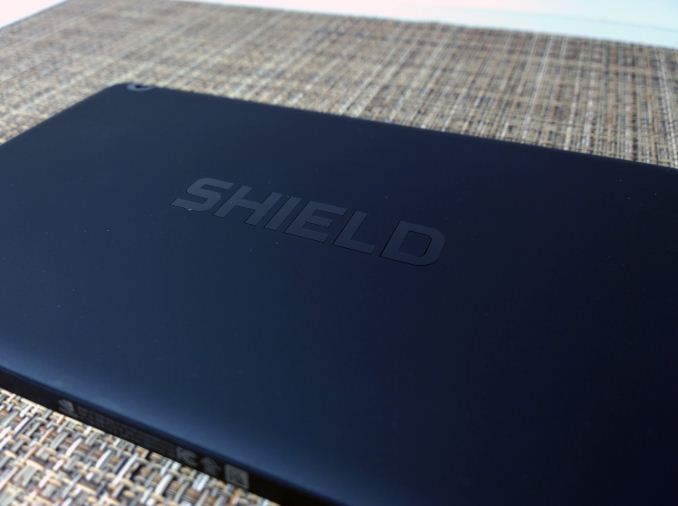
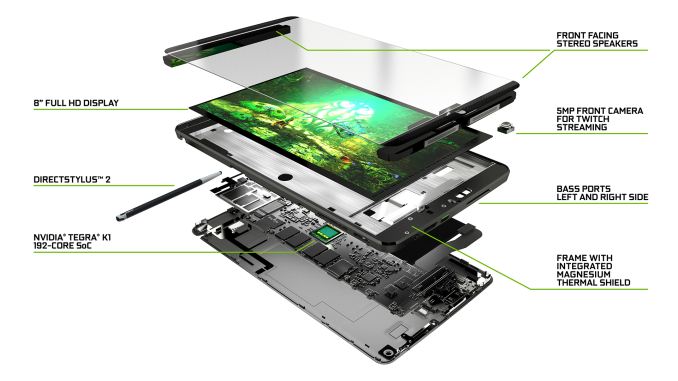
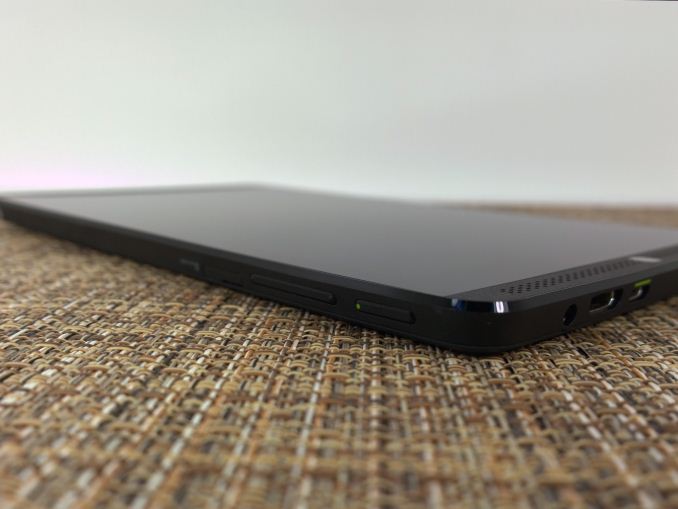
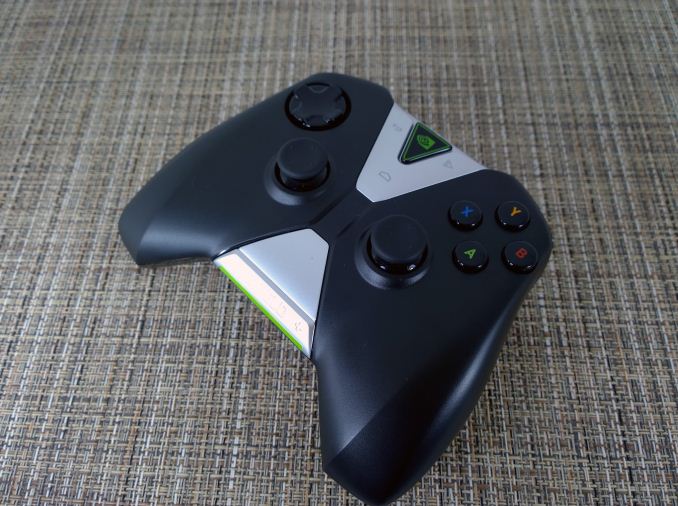








174 Comments
View All Comments
name99 - Tuesday, July 29, 2014 - link
OK. I guess there are situations where that makes sense. Thx.6cef - Tuesday, July 29, 2014 - link
if "closer to 6504k is better", then you should order the graph by the absolute magnitude of the difference between each devices white point and that ideal value.duh.
kyuu - Wednesday, July 30, 2014 - link
+1kae - Wednesday, July 30, 2014 - link
I'll echo the question of a few previous comments... What is the compatibility of the controller with other Android Devices and PC's supporting WiFi Direct? I'm still rocking the Xbox360 Wireless, but if I can ditch the stupid USB dongle and go direct, I'd do it in a heartbeat. Double the function if it also communicates with my N5, and I'm sold.Anyone know? The documentation only talks about how fast WiFi direct is, but not if NVidia is using some proprietary drivers, or if it will work with any device. My hope is the latter.
wintermute000 - Wednesday, July 30, 2014 - link
it always beats me why the big two don't write decent cross platform drivers. Why on earth did Sony not write a good windows and/or android driver for dualshock for example. Easy money (how much can it possibly cost to write a joypad driver) to instantly create a new market.TheJian - Wednesday, July 30, 2014 - link
proprietary, but nvidia is working with google to get it into AndroidL, so should start to work elsewhere soon, if not at least everything shield that comes along and K1 devices etc. A sale is a sale and you're not giving up a lot here, but mapping software (& community profile uploads for mapping to certain games) goes with it so maybe it would be giving away too much.victorson - Wednesday, July 30, 2014 - link
"Although there are some compelling reasons to go with smaller color gamut." Could someone please help out and say what could those reasons be? I'm really curious, always thought there were no such reasons.UpSpin - Wednesday, July 30, 2014 - link
Take a look at the color gamut of white LEDs. You'll see they're blue ones with a phosphor film to produce 'white' light:http://en.wikipedia.org/wiki/Light-emitting_diode#...
However the color reproduction is lacking, especially on cheap white LEDs (the ones you can buy on eBay for example) The more accurate colors you want (high CRI) the more difficult it becomes, they become more expensive and also less efficient. To reproduce all visible colors the best method is to use three separate LEDs, a blue, green and red one. Such a setup is highly inefficient however.
So all NVidia did was using cheap white LEDs to cut costs but also to enhance battery life at the cost of a poor CRI.
theNiZer - Wednesday, July 30, 2014 - link
Great review, very helpfull !cashnmillions - Wednesday, July 30, 2014 - link
Ok so the display isn't phenomenal. Like anyone can really tell the difference between a few pixels. It's an 8" tablet, it doesn't need resolution above 720p to look good. The GPU capabilities are phenomenal, I remember when the Snapdragon and Adreno destroyed the competition about a year ago, this destroys that. I think it's an awesome piece of hardware, I plan to get one, just kind of sucks that the controller is $60. I wonder if I can use an XBOX 360 controller with it like I can on my Nexus 7.